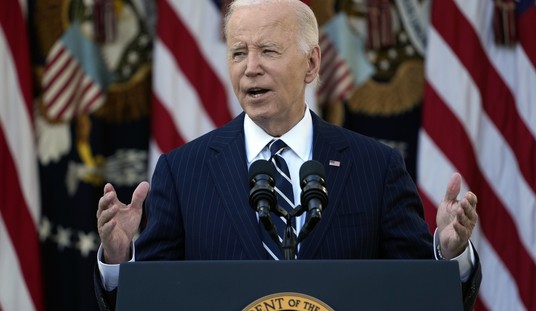Charles Dickens captured the spirit of an era in a single sentence: “It was the best of times; it was the worst of times.” For American workers, that sentiment still seems to apply.
On the one hand, there’s a lot to be grateful for. “Today, the typical job involves less mindless repetition or physical exertion and more mental activity than in the past,” notes economist James Sherk of The Heritage Foundation in an upcoming paper. He adds it also requires a greater level of education and is safer and more comfortable than it was a generation ago.
Still, a case could be made for the second half of Dickens’ sentence -- that we’re in the “worst of times.” According to RealClearPolitics.com, polls show that almost 80 percent of Americans think the country is on the “wrong track.” And a recent USA Today poll found more than half of all Americans think “their standard of living is no better today than five years ago.”
It’s understandable they might think that, since they’re frequently told the “rich” are getting richer while members of the middle class are merely working more. In a 2006 paper, the liberal Economic Policy Institute wrote that, “Despite strong growth in labor productivity, hourly wages for most workers are not keeping pace with inflation.”
But there’s more to compensation than wages, and benefits have actually grown faster than worker productivity.
Recommended
Almost a third of the average employee’s compensation is paid in benefits. Add wages and benefits together and “over the past 40 years compensation per hour and output per hour -- that is, productivity -- have moved almost in unison,” Sherk found. One federal measure of total compensation shows it rose by 3 percent from 2003-2006 and by 9 percent from 2000-2006, even after adjusting for inflation.
Benefits -- including health coverage, 401(k) plans and paid sick leave -- are expensive, yet critical.
Health care, for example, costs employers more than it did decades ago because employees get more, and our entire society reaps benefits. Better health care allows workers to live longer, healthier lives.
How about the claim that employers are “squeezing” workers?
It doesn’t hold up. “Over the past 40 years,” Sherk says, “the compensation that companies pay their employees has held constant at slightly over 70 percent of national income, never deviating more than a few percentage points from that number.” It’s been so steady that “in the first quarter of 1968 employee compensation was 69.9 percent of national income. In the last quarter of 2007 it was 70.6 percent.”
Employees are actually doing better, because there’s more money to go around. Our economy has grown by leaps and bounds since the 1960s. And that rising tide has benefited those near the bottom of the economic scale as well as the wealthy.
Yes, unemployment jumped last month to 5.5 percent. But even so, the unemployment rate remains remarkably low by historical standards.
Economic growth can be scary. As new jobs are created, old jobs often go away. But the results are positive. Our economy has indeed lost many low-wage manufacturing jobs, but has created more high-wage jobs in engineering, computer science and nursing.
Things aren’t perfect. There are economic problems in our country today, as there will always be. Americans may well carry too much debt, for example. But we don’t end up in Dickensian debtors’ prisons.
We may act, at times, as if we’re living in “Bleak House.” But the facts on wages and jobs show we should have “Great Expectations” for our national future.
























Join the conversation as a VIP Member